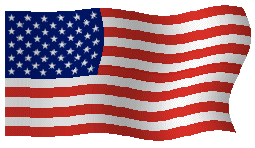
FLYING "OLD GLORY" ? SUCCESS IN TEXAS HOA |

FLYING "OLD GLORY" ? SUCCESS IN TEXAS HOA |
Today on the first year anniversary of 9/11 adoption of changes in the flagpole restriction were announced both on the First Colony Community Services Association website and in the Fort Bend/Southwest Star. Attached is a copy of the Star September 11, 2002, front page article by Barbara Fulenwider and the new FCCSA Guidelines off the FCCSA website. As one of the nations largest planned communities, our homeowner's association, FCCSA, has established very reasonable guidelines for residential display of the American and State flags that can be referenced by other communities and local/state governments facing the same issue between HOA and homeowners. Thank you all for your pro-active support and guidance, especially Barbara Fulenwider of the Fort Bend/ Southwest Star. With all the negative news today, this small action shows what can be done in America when everyone approaches an issue with a positive attitude.
|
By Barbara Fulenwider First Colony homeowner Ted Wilks got his way. Flags can fly from in-ground poles in First Colony front yards thanks to his protesting the deed restrictions that denied homeowner’s that right. Wilks protest began in June when he complied with the restrictions and took down his pole and flag. But he also filed a modification application with the First Colony Community Services Association (FCCSA) aimed at changing the deed restrictions concerning permanent flagpoles in front yards. Even though he got an e-mail from the group saying he could fly his flag on seasonal/holidays, Wilks took issue with that because he believes neither the American nor Texas flags are seasonal. He believed both should be allowed to be flown 24/7 and from permanent poles in front yards. So he met with the modifications committee on July 9 and proposed numerous changes to the restrictions. The committee decided to poll residents via the FCCSA website to find out how other homeowners felt about it and when the committee met again with Wilks on hand, they adopted many of the changes he had proposed. The new restrictions allow a "temporary flagpole," one mounted in a sleeve so it can be removed, and "kept there only when the flag is displayed. Only one flag (either the U.S. or Texas) may be flown from this pole." Further, the deed restrictions say that both house mounted and in-ground flagpoles must be removed from view when no flag is displayed and all flags and flagpoles "must be properly maintained at all times," which means no rust, bent or damaged poles and no torn, faded or frayed flags. Also, flags cannot be flown from fences or shrubbery and all proper flag etiquette must be followed, which includes lighting at night. The light must be in ground with a minimum of two bulbs that total no more than 150 watts, must shine directly up at the flag and cannot spill into adjoining properties. Permanent or temporary flagpoles may not be lower than 15 feet or taller than 18 feet, including pole ornamentation and the size of the flag must be appropriate to the height of the pole. Also, flagpole halyards must be securely fastened so they don’t bang in the breeze and disturb neighbors. Poles in the ground must be metal and only white, silver or bronze and the ornament can only be a ball of the same material and color as the pole. Even though the recommendations won’t be formally approved until the FCCSA board meets on Sept. 19, Wilks said, "I was proud of them all. These people are trying to work with us and they did. The modifications committee approved it unanimously. There was no dissent at all. I’m very happy with it. "The basic restriction now for the front yard is the pole must be 10 feet from the property line. For permanent flagpoles, (those without the sleeve) residents must submit a modification request, which has to be reviewed," Wilks said. But approval "will be pretty automatic, if you follow all the rules." Wilks followed the rules before and after he installed his flag pole kit. He removed it when told he was violating deed restrictions, put it back up when he was told it was allowed, and now can fly it lighted 24/7. Some battles are worth the effort.
|